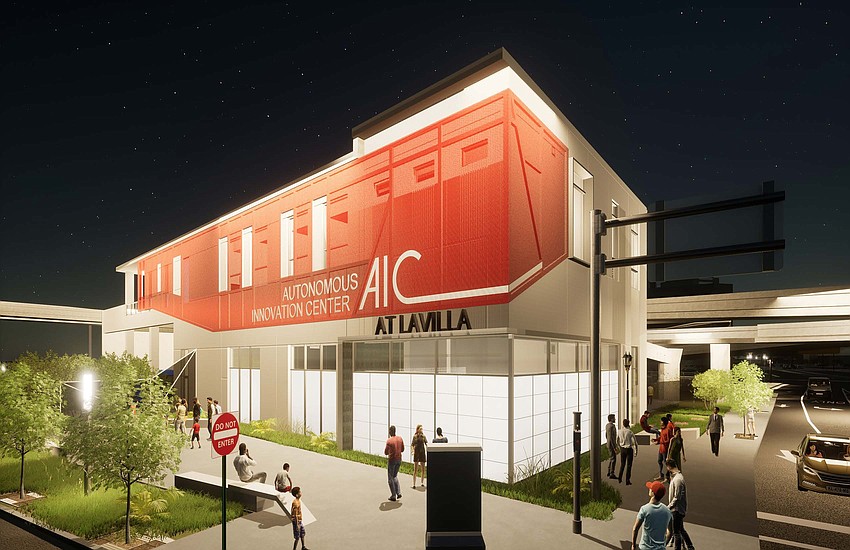
Jacksonville and Yellowstone National Park don’t share much in the way of topography, weather patterns and wildlife, but an Oxford University professor and founder of an autonomous vehicle software company says there’s a similarity between the two places.
Professor Paul Newman, who joked that his parents were “just not clued in at all” in naming him after the late actor, said during a May 30 presentation in Jacksonville that the Jacksonville Transportation Authority’s Ultimate Urban Circulator (U2C) system of automated people movers had the same transformational capability as the reintroduction of wolves into Yellowstone in the mid-1990s.

In the park, the wolves touched off a string of environmental improvements by thinning elk herds, which led to less overgrazing, healthier conditions for bees and other pollinators, improved growth of flora and tree stands, reduced runoff into streams and improved health of fish populations.
“It’s called a trophic cascade,” he said.
The U2C stands to similarly change the transportation ecosphere, Newman said, by providing data that can propel the development of self-driving vehicles.
Newman, who pioneered AV technology, envisions the system helping transform transportation beyond the single-occupancy vehicle model that has been in place since the horse-and-buggy era.
Newman made his remarks during the JTA’s State of the Authority event at the Prime Osborn III Convention Center. The event came a day after the JTA held a ceremonial groundbreaking at its Autonomous Innovation Center, the nerve center for the U2C, on a site near Broad and Water streets.
Leads software company
Newman, whose company Oxa produces the software for JTA self-driving vehicles being piloted at the Florida State College at Jacksonville Downtown campus, described Jacksonville as being “disproportionately valuable” in AV development and told the audience of about 150 people that it was “extraordinary that you guys are ahead on this.”

Saying he would tell the crowd things it didn’t expect to hear, Newman admitted to failing his driver’s test five times. That might sound disconcerting coming from someone whose job is to help produce safe self-driving vehicles, but he said his point was that autonomous vehicles have an advantage over human drivers in terms of experience.
As a teenager, he said, his experience was limited to reading a manual and driving around the block a few times. AV technology, he said, gives every self-driving vehicle information gleaned from input gained during “every mile driven by every autonomous vehicle ever.”
The U2C is envisioned as a network of autonomous shuttles that will initially operate on a three-mile route on and near Bay Street Downtown and expand to connect to Riverside, Springfield and San Marco.

The cost of the Bay Street phase, expected to go online next year, is $66.5 million.
The total cost of the system could reach $400 million.
The JTA and U2C proponents like Newman say it will provide convenient and inexpensive transportation.
Critics of the system say it’s too costly and that the small shuttles are not an effective way to move people.
'A blueprint' for Florida
Presenting the State of the Authority speech, JTA CEO Nat Ford said the U2C “creates a blueprint for cities in Florida as well as across the United States.” He said the benefits of the system go beyond transportation and into workforce development through an FSCJ program to train students in AV technology.

In Ford’s presentation, he also mentioned plans to add a second St. Johns River ferry and said that the JTA’s Mobility Works 1.0 program of infrastructure improvements was scheduled to end two years ahead of schedule. That program, which got underway in 2016, comprised nearly $400 million work of projects.
Ford said it is expected to end in the fall of 2024 with the completion of improvements on San Pablo Road west of the Intracoastal Waterway and south of Atlantic Boulevard.